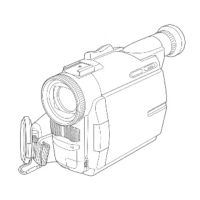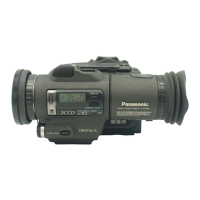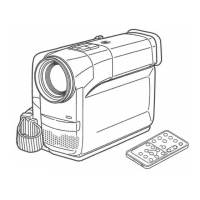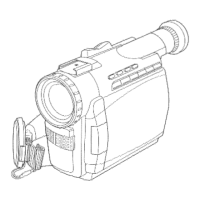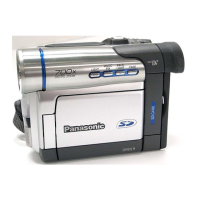Glossary
Digital Video System
In
the digital video
system, picture and
sound
are
converted into
digital
signals
and recorded onto the tape.
This completely digital
recording allows
recording and
playback of
picture and sound
with minimum quality
deterioration.
In
addition,
such data as
Time
Code,
Date and Time
are
also
automatically
recorded
as digital
signals.
Features
•
Superior
picture resolution
•
Excellent
signal-to-noise
ratio
•
Stable
pictures
•
Minimized
quality
deterioration
in dubbing
•
Minimized cross
color
distortion
•
PCM
digital sound
•
No picture
deterioration in
LP
Mode
•
6.35
mm-wide tape
•
Compact
cassette
with
long recording
time
•
Minimized quality
deterioration in
editing
•
Time Code
editing
Compatibility with
S-VHS or VHS
Cassettes
As this
Movie Camera
uses a
digital method
for recording
picture and
sound,
there is no
compatibility with
conventional
S-VHS
or VHS
video
equipment
using
analog
recording
methods.
In addition,
the size
and
shape
of the
cassette are
completely
different.
Compatibility
with Output
Signals
As
the video
and
audio
signals output
from the
audio
and
video
output
jacks are
analog
—
the same as
in
conventional
video systems
—
you
can
connect this
Movie Camera
to your
S-VHS or
VHS VCR
or
TV for
playback.
PCM
Digital
Sound
For
recording of the
sound,
this Movie
Camera
offers the
choice
between two
different PCM
Audio
Recording
Modes.
•
16
bit,
48
kHz, 2
channels
•
12 bit, 32 kHz, 4
channels
The
"16
bit,
48
kHz, 2
channels"
Mode
offers
superior
recording sound
quality.
The
"12
bit, 32
kHz, 4 channels" Mode
lets
you
record
the
original
sound in stereo
on
two
channels
and the dubbed
sound
in
stereo
on two
separate
channels.
Sub Code
The
digital recording
system
offers
the
added
capability
of
recording
sub
code
containing
various data.
The
following
data
is
recorded
as sub code
on this
Movie
Camera:
•
Time code
•
Recording
date
and
time
•
Index signals for
locating still images recorded
in the
Photoshot Mode
•
Index
signals for
locating
the beginning
of scenes
marked with index
signal
Focus
If you look at
an
object through a magnifying glass
and
move it
closer or
further
away
from your
eye, you
will
reach
a
point where the object becomes clearly visible.
Being focused
or
in
focus means
that the
subject
can
be
seen with
optimum
clarity and
sharpness.
Human Eyes
Human
eyes
have lenses as well, and when
we look at
objects at
different
distances,
the shape of these lenses
changes
automatically so that we can always see these
objects
clearly.
Movie Camera
The image of the subject enters the
Movie Camera
through the
lens and is converted
into
an
electric
signal
(video
signal)
for recording onto magnetic tape.
The
focus is adjusted
either manually or automatically by
moving a
focusing
lens.
Auto Focus
Adjustment
The Auto Focus
System
automatically
moves
the
internal
focusing lens
forward or
backward and
adjusts
the focus
so that
the subject
can be
seen clearly.
The Auto Focus
Adjustment has the
following
characteristics:
•
It
adjusts
until the
vertical contours
of the subject
are
as
sharp
and clean as
possible.
•
It adjusts
the focus on the subjects
with strong
contrast.
•
It adjusts
the focus
on
the subject in
the center
of the
LCD
Monitor or Finder.
Unlike human eyes,
the lens of
the Movie
Camera
cannot
instantaneously
change the focus
from a nearby
to a
distant
subject and
vice
versa.
-73-

